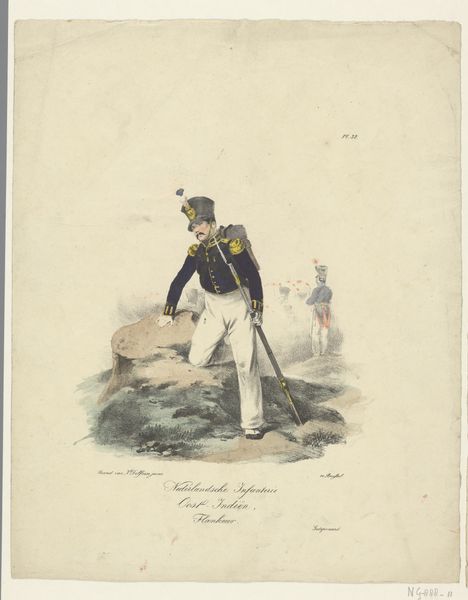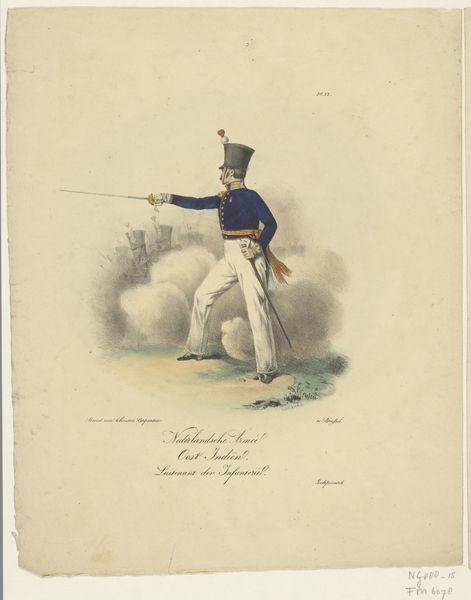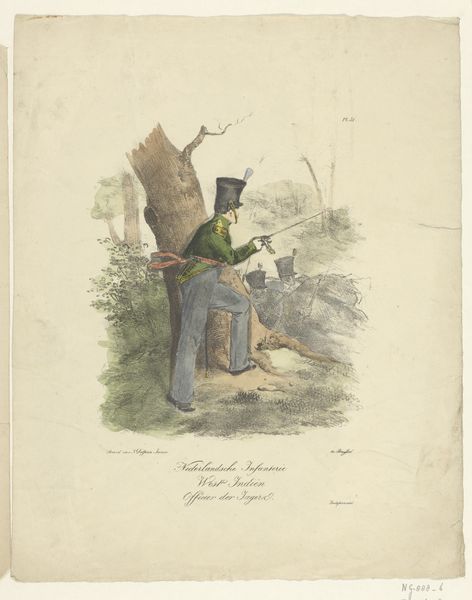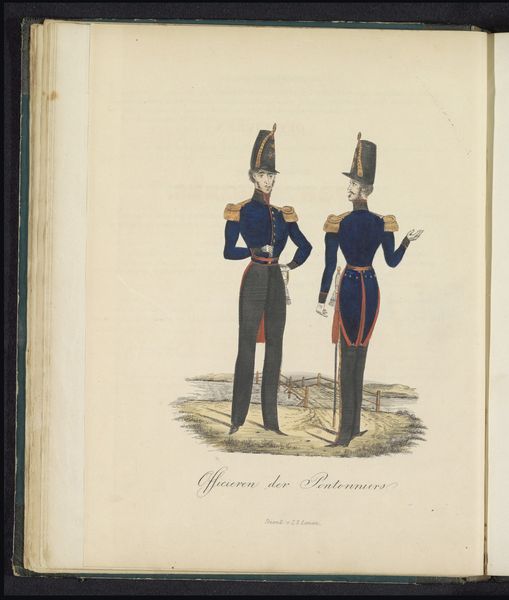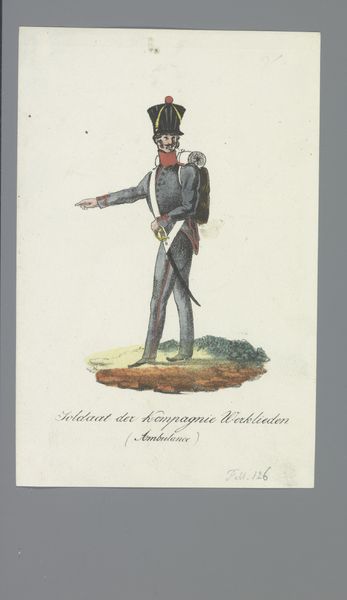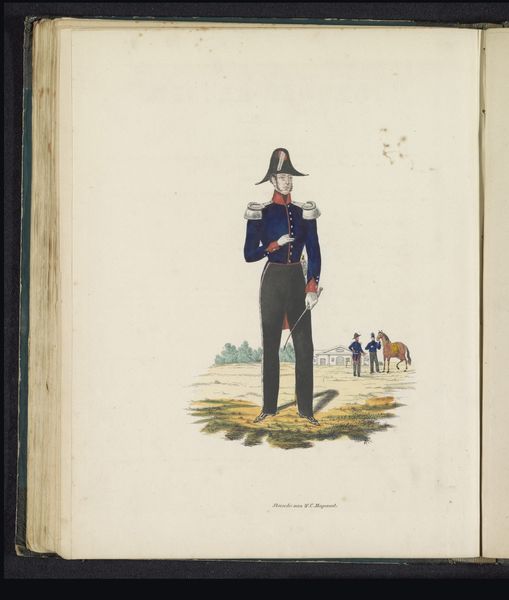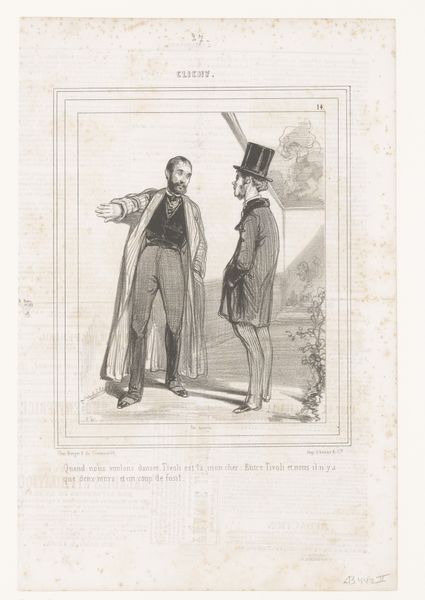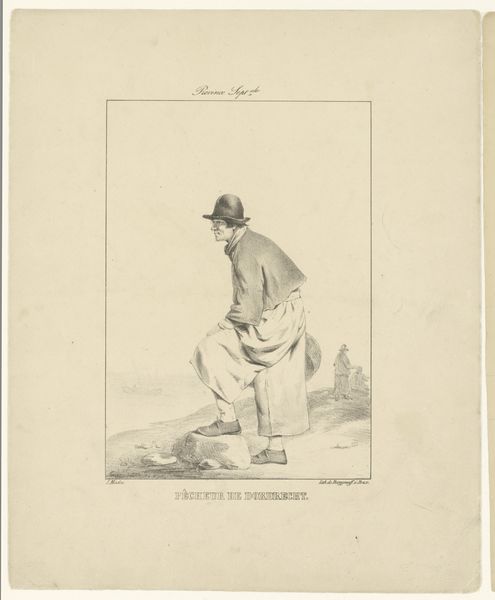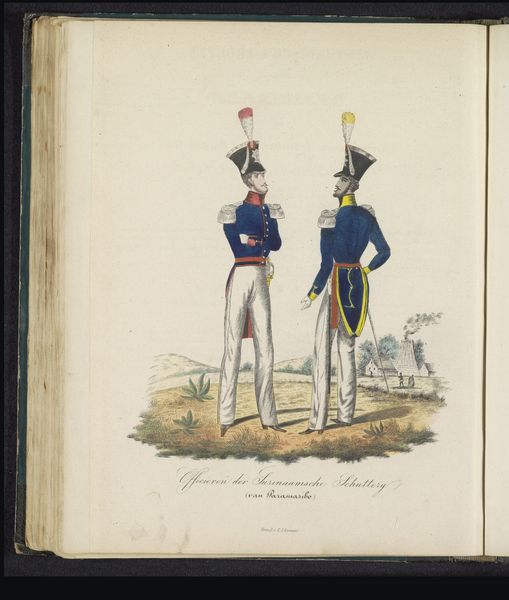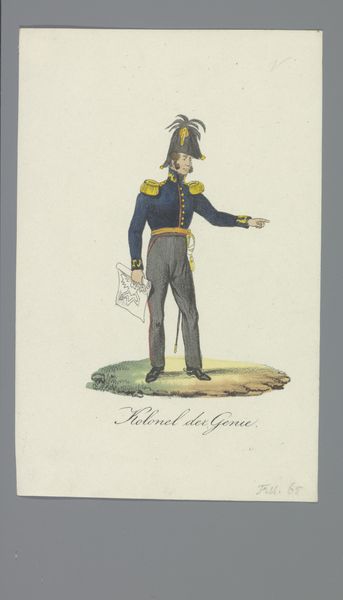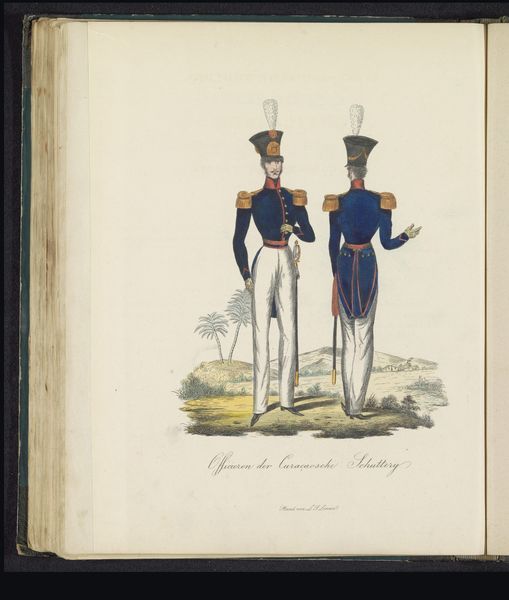
#
toned paper
#
light pencil work
# print
#
pencil sketch
#
incomplete sketchy
#
personal sketchbook
#
coloured pencil
#
underpainting
#
watercolour bleed
#
watercolour illustration
#
watercolor
Dimensions: height 368 mm, width 298 mm
Copyright: Rijks Museum: Open Domain
Editor: This is "Koloniale Guides van Suriname," made between 1820 and 1827 by Jean-Baptiste Madou. It's a watercolor and pencil sketch depicting indigenous guides in Suriname. The sketch feels a bit staged, like a theatrical performance of colonialism. How do you interpret this work? Curator: The title itself, "Colonial Guides," immediately raises questions of power dynamics and representation. Note how the figures are rendered: Their posture, clothing, and placement within the landscape speak volumes. What emotional registers are triggered when you think about what ‘guides’ mean, both then and now? Editor: I guess, it's about seeing them not as individuals but as tools of colonial expansion, perhaps? Their indigenous knowledge, instrumentalized... It's disturbing. Curator: Exactly. Think about the symbolism embedded in their tools – the weapons, the map presumably carried on their back. Consider the visual language being used. Are they presented as active agents, or passive instruments in a colonial narrative? Also, how does this image participate in the larger discourse of "Orientalism", and how does it distinguish itself? Editor: Orientalism! The way the West exoticizes and simplifies non-Western cultures. But here, the guides are presented almost as military personnel, rather than exotic "others." Curator: Precisely, blurring the lines and contributing to the complexities of colonial power. So, this work, seemingly simple, serves as a powerful meditation on cultural memory and how images shape our understanding of history, don’t you think? Editor: I do. Looking at it again, I see how much the composition itself pushes the idea of imposed order, not of a natural encounter. It is more constructed, and less observational, which affects its truth-value. Curator: Absolutely, and the fact that this is a watercolor gives it this veneer of civility that speaks of ‘clean’ control over wild terrain, when it’s not necessarily the case, especially with this territory's deep connection with Maroon communities resisting slavery. What a problematic relationship! Editor: Definitely. It makes you consider whose perspective we're really seeing, and what's been left out.
Comments
No comments
Be the first to comment and join the conversation on the ultimate creative platform.
